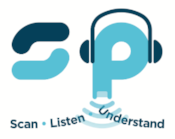Transitions with Technology in your Pocket
Transition is a part of the educational process, it happens between years, between schools, between classrooms, and between teachers. It continues through every stage of the educational process and getting it right can make or break learning progression; it can support or undo emotional and wellbeing strategies.
Some students will have a lot of supporting information that travels with them. For these learners, additional needs may be well documented. The pack might contain an IEP(1), IBP(2), EHCP(3), or a ROS(4). If families regularly take part in wider discussions about health, care, or social needs with a wider team of professionals, the transition support package is usually very thorough. Transition can take place over many months and professionals may meet frequently to ensure learning needs can be met.
For the majority of learners, transition happens without an individual support package and without a learning or behaviour passport. This is because; in a busy school environment it is tricky to ensure that the strategies you have been using flow to the next teacher or school. Teaching is not a time rich profession and as such, with the best will in the world, some information does not get shared. Some of the work will be replicated, and often professionals spend a lot of time re-testing and re-presenting strategies that may have already been tried with students who are not typical learners.
So what gets lost? For the individual, it is the relationships with the class teacher that gets lost in transition. There are the strategies and nuances that cannot be quantified in a data-base, gems that flow from great teaching take time to crystallise. Think of a teacher who knows their students really well. They know that in order to establish an individual’s self esteem and willingness to learn, a fist bump and a smile is essential at the start of the day. They may have put in place simple wellbeing support, established basic routines and have soft strategies that enable a reluctant learner to take part. Tools like C3B4Me which encourages self directed learning or break out time with a Sensory Box may not get shared and if it does, it may not translate to the next learning experience.
So how can we manage successful transition and what is the most essential information to share when so many things are important? There is a huge list we could choose from that includes ensuring that friendships can be maintained, sharing emotional health concerns, or providing evidence of success or areas of gifts and talents. All of these are important but, I would strongly suggest that the most important factor is ensuring that the strategies used for literacy are shared.
Literacy is at the heart of educational progress and when learning gaps emerge it is because the support that was previously in place and the routines and adaptations made to support literacy are not sustained after transition. Because of this many students with additional needs go through transitions with no flags raised.
This is my transition top tip to record the normal way of working in class that has been experienced. At the end of the day, ask your students to take out their learning tools and arrange them on the table top. You may find colour overlays, reading pens, writing slopes, pencil grips, traffic lights, volcano cards, or a card requesting use of speech to text software. Pop the learners name tag on each desk and take photographs of each work station. If you produce learning passports then attach the photo to the document. Other ways to share this information is to send the picture home to parents, and give a copy to the student themselves.
The best way to support successful transition is to support independent learning and awareness of the tools that are essential to that learner. When you have worked so hard to support students with great ideas and strategies through the year, make sure that they can still benefit from your insight. When your door closes and the next door opens you will know they have a literacy strategy picture that they can talk about.
1. (Individual Education Plan)
2. (Individual Behaviour Plan)
3. (Education, Health and Care Plan)
4. (Record of Support)
